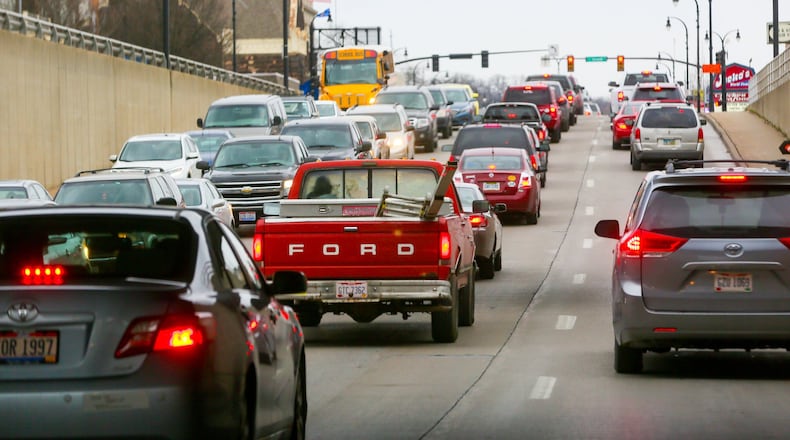Traffic congestion is one of the biggest concerns citizens have expressed about the gigantic $144 million Spooky Nook Sports Champion Mill, which is to be North America’s largest indoor sports complex, plus Greater Cincinnati’s second-largest convention center, behind only Cincinnati’s Duke Energy Convention Center.
Spooky Nook is expected to attract more than 10,000 athletes and their families on some weekends. Traffic already is heavy through the city, particularly during the hours when people commute.
The new system is expected to help in multiple ways.
• Now, when a crash or lightning strike knocks out an intersection’s signals, officials don’t know about it until someone calls them. The new, computerized system will send them alerts.
• Rather than losing power in such situations, the most significant intersections will have battery backups for signals to keep them working.
• These days, when officials want to change signal timing to improve traffic flow, they have to go to each intersection and make the adjustments. With the proposed Centracs system, that can be done remotely and very quickly.
• Mason, which has such a system that is being phased in, already uses its system to make quick changes when it learns that Mason High School will release its students an hour early, or when a big storm hits Kings Island, unexpectedly sending thousands of people driving home for the day.
• In the system’s most intriguing ability, it uses cameras at each intersection and continuously counts vehicles as they stop for the traffic lights. The system then can adjust itself to make the traffic more freely.
Mayor Pat Moeller and others on the city council were enthusiastic about the system’s possibilities when told about them recently.
“Obviously when Spooky Nook opens in the end of 2021, anything which can help that flow, we need to tell our citizens, ‘Wait ‘til you hear about this,’” Moeller said.
“It will allow us to move more traffic, more efficiently,” said Scott Hoover, the city’s traffic operations manager. Using cameras that help it count traffic and within parameters the city assigns it, “it will then make adjustments off the conditions,” he said.
“Making your system as efficient as you can is always a plus,” Hoover said. “This is the latest and greatest system that will allow us to move as much traffic through the corridor as we possibly can. It’s the most up-to-date technology in the signal world.”
The $4.2 million grant from the Ohio-Kentucky-Indiana Regional Council of Governments will cover 80 percent of the project’s costs, with the rest paid by the city.
Logan told council members that city Engineer Rich Engle came into his office “extremely excited about the grant,” which originally was scheduled to arrive in 2024. “And I said, ‘Can you call them back and ask them to expedite the money?’ He calls ‘em back, and they moved it up two years for us.”
Steve Hartke, Mason’s assistant city engineer, said his system was installed about a year ago, but still is being phased in, especially the self-adjustment aspects.
“The benefits have already been seen, with being able to diagnose traffic issues from the palm of your hands,” Hartke said. Employees or traffic engineers can look at the traffic situation through their computers and quickly make tweaks.
“It’s definitely been a very beneficial system to be able to make those changes kind of like on the fly,” Hartke said.
Corridors in Mason that are covered are Kings Island Drive, Mason-Montgomery Road, and Ohio 741.
“It’s very, very responsive,” he said. “Issues can be diagnosed and trouble-shot very expeditiously.”
Hartke highly recommends the system, which cost about $3 million to connect 48 intersections.
Mason High School and other nearby schools have multiple traffic peaks during the day, with pick-ups and drop-offs during the day for elementary students and others.
The biggest benefit in Mason has been for the schools, “not only for that traffic, but for the everyday traveling public who have to fight with that school traffic when they’re going to and from work,” he said.
Installation could take 18-24 months citywide, but the city likely will install in areas to ease Spooky Nook and commuter traffic before other areas.
“I think it’ll most likely start on the High-Main corridor,” Logan said. “That’s our highest counts of traffic in the city right now.”
About the Author
